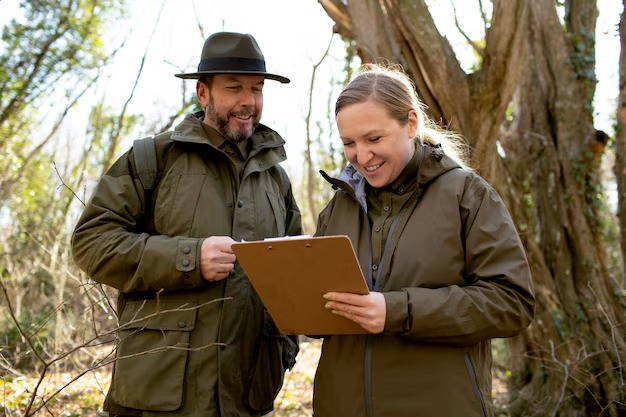
Hogan Expands Managing Partner Roles to Fuel Growth from Stroock
Hogan Expands Managing Partner Roles to Fuel Growth from Stroock
The dynamic landscape of contemporary enterprises requires innovative approaches to leadership structures. Organizations today are actively seeking ways to redefine how authority is shared and exercised, aiming to cultivate an environment where collaborative efforts and diverse perspectives pave the way toward prosperity. This shift emphasizes a more inclusive framework, recognizing that shared responsibility can drive greater operational effectiveness.
In this context, recent developments highlight a significant reallocation of responsibilities within the leadership hierarchy. By broadening the scope of key positions, companies are equipping their teams with the necessary tools to navigate complex challenges and seize emerging opportunities. This proactive strategy reflects a commitment to adaptability and foresight, enabling organizations to thrive in an ever-evolving marketplace.
As enterprises embrace this transformation, the focus shifts towards fostering a culture of accountability and innovation. By empowering individuals at various levels, firms can harness a wealth of knowledge and creativity, ultimately paving the way for sustained growth. The successful implementation of these initiatives not only positions companies advantageously but also enhances their potential to achieve long-term milestones in an increasingly competitive arena.
Understanding Growth Mode in Business
In the realm of commerce, organizations often experience transformative phases that propel them toward greater opportunity and achievement. These periods are characterized by strategic shifts, enhanced operations, and an unwavering focus on expanding influence within their respective markets. Embracing these pivotal times is crucial for any entity aiming to elevate its standing and improve overall performance.
Recognizing the key elements that define this trajectory is essential. Typically, a surge in this journey entails innovation in product offerings, an evaluation of target demographics, and refining customer engagement strategies. By fostering a culture that promotes adaptability and forward-thinking, entities can effectively seize new avenues for advancement.
Moreover, collaboration and effective resource management serve as cornerstones during these transformative phases. Engaging with stakeholders and facilitating open channels of communication ensures that everyone involved aligns with the overarching vision. These dynamics not only streamline processes but also bolster morale, as teams work collectively towards common objectives.
Ultimately, navigating through such a pivotal time requires a careful balance of ambition and pragmatism. Understanding the nuances of this journey allows organizations to harness their full potential and foster a resilient foundation for continued development.
Role of Managing Partners in Expansion
The influence of key leaders in a firm is pivotal when it comes to navigating the complexities of growth opportunities. These individuals are tasked with steering the organization towards new horizons, ensuring strategic alignment and operational efficiency. Their involvement is crucial in shaping the direction of initiatives and fostering collaborative environments that drive innovation.
The responsibilities entrusted to these leaders extend beyond mere supervision; they actively engage in formulating strategies that capitalize on emerging trends and market demands. By leveraging their expertise, they can assess risks and allocate resources effectively, which is vital for sustainable development.
Furthermore, building strong relationships within and outside the organization is another essential facet of their role. They act as the bridge between various stakeholders, facilitating communication and enhancing teamwork across diverse departments. This connectivity not only boosts morale but also aligns efforts toward common objectives.
In essence, the strategic vision and operational acumen exhibited by these leaders significantly contribute to the overall trajectory of the organization, making them indispensable in the journey towards achieving greater milestones.
Strategies for Enhancing Business Success
Achieving excellence in the corporate landscape requires a multifaceted approach. Organizations must adopt innovative techniques aimed at improving efficiency, fostering collaboration, and empowering individuals at every level. By doing so, they can ensure sustainability and adapt to the ever-changing market environment.
Focus on Team Development
Investing in people is crucial. Providing training and development opportunities helps cultivate a skilled workforce. When employees feel valued and supported, their engagement increases, leading to improved productivity and morale. Additionally, teamwork initiatives can promote a culture of collaboration that drives creative problem-solving and innovation.
Leverage Technology and Data
Utilizing advanced tools and analytics allows organizations to make informed decisions. By analyzing data trends, companies can identify areas for improvement and respond proactively to customer needs. Emphasizing digital transformation not only streamlines processes but also enhances communication and operational efficiency.
Key Benefits of Leadership Expansion
The strategic enhancement of leadership capacities within an organization presents numerous advantages that can significantly impact overall performance and effectiveness. By broadening the scope of leadership, teams can leverage diverse perspectives, improve decision-making processes, and drive innovation. This approach not only fosters a sense of inclusion but also encourages accountability and collaboration across various levels of the organization.
Improved Decision-Making: When leadership is diversified, the organization benefits from a wider array of insights and experiences. This collective wisdom enables more informed choices, leading to better outcomes.
Enhanced Collaboration: Expanding leadership empowers individuals at different tiers to contribute their unique skills and viewpoints. This collaborative atmosphere cultivates stronger relationships and synergies among team members.
Increased Employee Engagement: Providing opportunities for leadership development fosters a sense of ownership and responsibility among employees. When individuals feel valued, their motivation and commitment to the organization grow.
Innovation and Agility: A stronger leadership framework allows organizations to respond more effectively to market changes and challenges. With multiple leaders driving initiatives, the ability to adapt and innovate aligns closely with evolving demands.
Organizational Resilience: Building a robust leadership structure enables an organization to withstand fluctuations and navigate uncertainties more adeptly. Leaders equipped with varied skills are better positioned to address potential risks and seize opportunities.
Challenges in Managerial Role Adjustments
Adjusting leadership functions within an organization can present several hurdles that impact overall efficacy and team dynamics. As responsibilities shift, understanding how to navigate these changes becomes crucial for maintaining operational fluidity.
Communication barriers often arise when redefining expectations. Ensuring that all team members are aligned with new directives demands clarity and consistency. Misunderstandings can lead to frustration and decreased morale, affecting collaboration.
In addition, shifting responsibilities may bring about adaptability issues. Individuals accustomed to specific tasks may struggle to embrace new requirements. This resistance can manifest as a lack of engagement or decreased productivity, ultimately hindering progress.
Moreover, the challenge of resource allocation becomes prominent as adjustments necessitate reallocating both human and financial resources. Determining the best use of available assets requires foresight and strategic planning to avoid disruption in ongoing projects.
Lastly, the potential for conflict among team members can increase as roles are modified. Differing perspectives on authority and responsibility may generate tension, making it essential to address interpersonal dynamics proactively and constructively.
Future Trends in Business Leadership
Emerging dynamics in organizational governance are reshaping how leadership is approached in the contemporary landscape. As enterprises navigate through complexities and uncertainties, the demand for innovative and adaptive stewardship is becoming increasingly paramount. Visionary leaders must be proactive in embracing change and finding new pathways to effectively engage their teams and drive performance.
Emphasis on Emotional Intelligence
The importance of emotional intelligence is gaining recognition as a critical factor in effective leadership. Leaders who can understand and manage their own emotions, as well as those of their colleagues, are better equipped to create harmonious work environments. This capacity fosters stronger relationships within teams, ultimately enhancing collaboration and productivity. Organizations are likely to focus on developing leaders with high emotional awareness to navigate diverse workplaces.
Sustainable and Inclusive Leadership Practices
A shift towards sustainable and inclusive practices is expected to remain at the forefront of leadership strategies. Leaders will need to prioritize social responsibility and environmental stewardship while ensuring diverse perspectives are woven into the decision-making process. By cultivating an atmosphere of inclusivity, organizations can leverage a rich array of ideas and innovations, paving the way for long-term resilience and success.
Q&A: Growth mode hogan expands managing partner roles
What is Hogan Lovells known for in the legal industry?
Hogan Lovells is known for its extensive expertise in various practice areas, including corporate law, litigation, and regulatory matters, making it a prominent global law firm.
How does Hogan Lovells approach class action lawsuits?
Hogan Lovells approaches class action lawsuits with a strategic focus on comprehensive case analysis, leveraging its experienced litigators to effectively represent clients’ interests.
What types of cases does Hogan Lovells handle as a law firm?
As a law firm, Hogan Lovells handles a wide range of cases, including commercial disputes, regulatory compliance issues, and class action lawsuits across multiple sectors.
Who are the key professionals involved in class action litigation at Hogan Lovells?
Key professionals involved in class action litigation at Hogan Lovells include seasoned litigators who specialize in complex litigation and have extensive experience representing large groups of plaintiffs.
What are the benefits of hiring Hogan Lovells for class action representation?
Hiring Hogan Lovells for class action representation offers clients access to a global network of resources, experienced litigators, and a proven track record of successful outcomes in high-stakes cases.
How does Hogan Lovells ensure effective communication during class action proceedings?
Hogan Lovells ensures effective communication during class action proceedings by maintaining transparency with clients and providing regular updates on case developments through dedicated litigators.
What distinguishes Hogan Lovells from other law firms in handling class actions?
Hogan Lovells distinguishes itself from other law firms in handling class actions through its collaborative approach, combining expertise across different legal disciplines to address complex issues effectively.
Can you describe a notable class action case managed by Hogan Lovells?
A notable class action case managed by Hogan Lovells involved representing consumers against a major corporation accused of misleading marketing practices, showcasing the firm’s litigation capabilities.
What role do litigators play in the success of class action lawsuits at Hogan Lovells?
Litigators at Hogan Lovells play a crucial role in the success of class action lawsuits by developing compelling legal strategies, conducting thorough research, and advocating vigorously for clients’ rights.
How does Hogan Lovells stay updated on changes in class action law?
Hogan Lovells stays updated on changes in class action law through continuous professional development, participation in legal seminars, and active involvement in industry associations related to litigation.
What is the role of the global managing partner for growth at Hogan Lovells?
The global managing partner for growth at Hogan Lovells is responsible for driving strategic initiatives that enhance the firm’s presence in key markets, including New York, and deepen relationships with clients.
How does Hogan Lovells approach litigation for Fortune 500 companies?
Hogan Lovells leverages its unmatched depth in litigation to represent Fortune 500 companies, focusing on every aspect of commercial real estate and securities litigation to ensure comprehensive legal support.
What was the significance of the 30 partners involved in the recent lateral hires at Hogan Lovells?
The lateral hires of 30 partners at Hogan Lovells signify a strategic move to enhance the firm’s capabilities, particularly in areas like antitrust and corporate law, and to strengthen its market-leading presence.
Which law firms were mentioned in the context of the recent litigation updates by Reuters?
In the recent litigation updates by Reuters, law firms such as Sullivan and Holwell Shuster were mentioned, particularly regarding their involvement in significant cases like the pending shareholder derivative lawsuit.
What are the implications of the pending shareholder derivative lawsuit filed in 2022?
The pending shareholder derivative lawsuit filed in 2022 against defendants in a district court by the Brown Law highlights critical issues regarding corporate governance and accountability, particularly for institutional investors.
How does Hogan Lovells handle COVID-19 related legal challenges?
Hogan Lovells addresses COVID-19 related legal challenges by providing clients with guidance on compliance, risk management, and adapting to new regulations, ensuring they navigate the evolving landscape effectively.
What strategies does Hogan Lovells employ to explore topics relevant to its clients?
Hogan Lovells employs strategies such as regular updates on legal news, engaging with clients through webinars, and fostering discussions that focus on a broader portfolio of issues affecting their businesses.
How does the firm represent Symbotic Inc. in its legal matters?
Hogan Lovells represents Symbotic Inc. by leveraging its expertise in securities litigation and MA, ensuring that the company’s interests are protected in complex transactions and regulatory matters.
What is the importance of witnesses to secure client relationships in litigation cases?
Witnesses play a crucial role in securing client relationships during litigation cases as their testimonies can significantly impact the outcome, demonstrating the firm’s commitment to thorough preparation and advocacy.
How does Hogan Lovells’ cookie policy affect its online presence?
Hogan Lovells’ cookie policy affects its online presence by ensuring compliance with privacy regulations while enhancing user experience on its website, allowing clients to update their choices regarding data collection.







